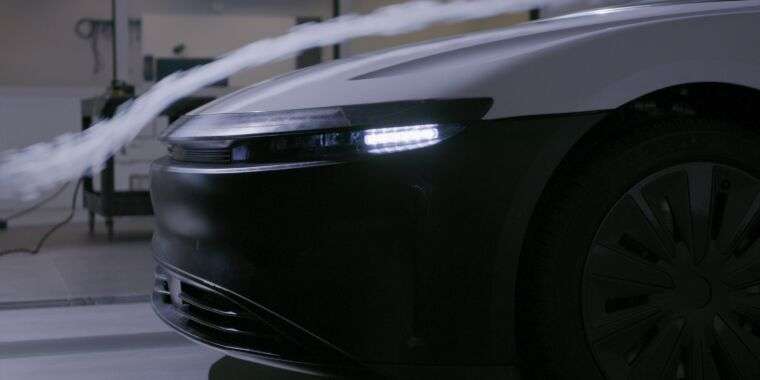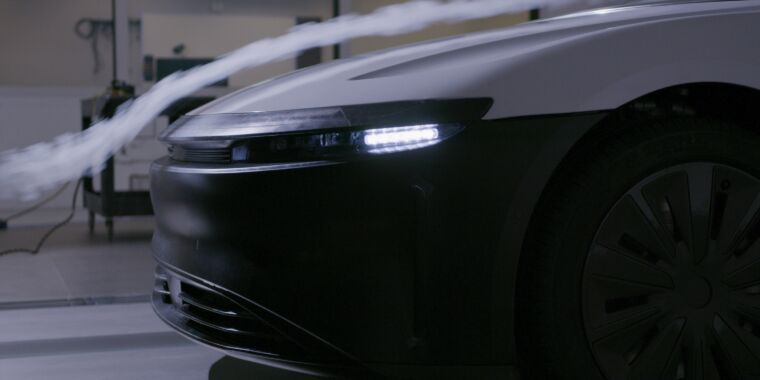
How’s this for aerodynamic? The Lucid Air’s drag coefficient is only 0.21
Lucid Motors wants the Air to travel 400 miles on a single charge. …

reader comments
124 with 54 posters participating, including story author
-
A prototype Lucid Air undergoing a flow visualization test at the Windshear wind tunnel facility in Concord, North Carolina.Lucid Motors
-
Side intakes in the front fascia smooth airflow around the wheel wells, which are a source of a lot of turbulence. There is also a vortex-generating air intake under the front bumper, but you can’t see that in this image.Lucid Motors
-
You can see here the airflow remains attached to the surface of the Air’s roof and doesn’t spiral up into a huge turbulent wake at the rear.Lucid Motors
A few weeks ago, we took a look at the most aerodynamically efficient vehicles ever made. At the time, the lowest-drag production car for sale in the US was the Porsche Taycan, which cuts through the air with a drag coefficient (Cd) of 0.22. But the rather excellent electric Porsche won’t wear that crown for very long. Lucid Motors is readying production of its first battery electric vehicle, the Air, and it has just released the results of some wind tunnel testing. Tests at the Windshear facility in North Carolina have determined that the Air has a Cd of only 0.21.
Moving through the air as easily as possible is important if you want to travel the farthest distance using a given amount of energy. As such, optimizing a car for low drag has become more important, first as regulators
Continue reading – Article source




